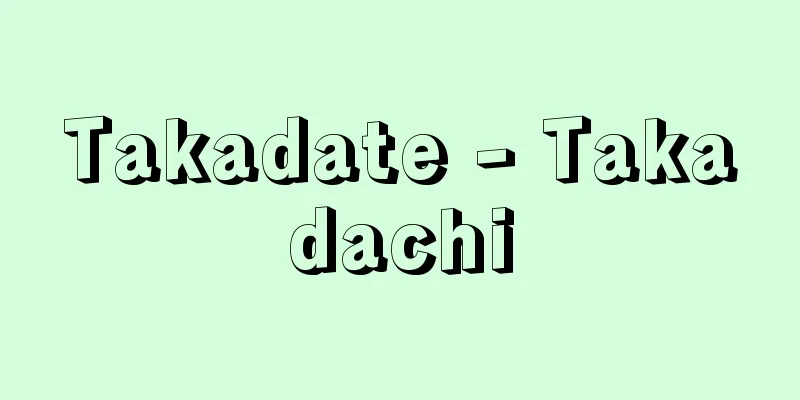Prison gate - Gokumon

|
It is also called "Kyoshu" or "Kyo-ji". It was a type of punishment from the mid-Heian period to the early Meiji period. It was a public display of the head, which was carried out as an example to the public. Until the Kamakura period, the decapitated criminal's head was impaled on a pole and carried across the main roads of Kyoto, and then the head was hung on a Chinese linden tree (an old name for the Chinese chinaberry) in front of the gates of the Left or Right Prison, and so eventually the term "gokumon" came to be used for "kyokumon". During the Heian period, it was widely carried out in the offices of the Kebiishi, and the execution was usually carried out exclusively by the office of the envoy, even if the person who beheaded the criminal was a Seitoshi. After the Muromachi period, a platform was made of pillars and crossbars, a head stand with a five-inch nail driven into it was placed on it, and the head was impaled on it and displayed, but the name "gokumon" remained unchanged. This system was not established until the Edo period, and the "Kujikata Osadamegaki" states that after decapitation in the prison, the head was to be exhibited at Kozukahara (Senju) or Suzugamori (Shinagawa). The head was placed on the gokumon platform and exhibited for three days and two nights, after which it was discarded, but the sutefuda (a sutefuda) with the crime written on it was to be left there for 30 days. During the Meiji period, the name of gokumon was changed to 'kyokubi' in the Kakeiritsu, then to 'kyokuji' in the Shinritsu Koryo and Kaisei Ritsuryo, but it continued to exist as a special punishment to be executed, and it was not until January 4, 1879 that the abolition of the kyokubi punishment was announced. (→ sarashi, death penalty) Source: Encyclopaedia Britannica Concise Encyclopedia About Encyclopaedia Britannica Concise Encyclopedia Information |
|
梟首 (きょうしゅ) ,梟示 (きょうじ) ともいう。平安時代中期~明治初期の刑罰の一つ。大衆へのみせしめとして行われたさらし首のことで,鎌倉時代までは,斬首した罪人の首をほこに突刺して京中の大路を渡したのち,その首を左獄ないし右獄の門前にある楝 (おうち。センダンの古名) の樹にかけてさらすことが多かったので,いつしか梟首のことを獄門と呼ぶようになった。平安期,検非違使の庁例においては盛んに行われ,その執行は,たとえ首をはねた者が征討使であっても,使庁が専当するのが常であった。室町時代以降になると,柱と横木で台をつくって,その上に5寸釘を打った首台を据え,そこへ首を刺してさらしたが,獄門という呼称は変らなかった。これが制度として整えられたのは江戸時代に入ってからで,『公事方御定書』には,牢内において斬首したのち,小塚原 (千住) ないし鈴ヶ森 (品川) においてその首をさらすとある。首は獄門台に載せられ,3日2夜さらされたのち,取捨てられたが,罪状を記した捨札 (すてふだ) は 30日間そこに立てておく定めであった。明治期になってから,獄門の名は,仮刑律では梟首,次いで新律綱領さらには改定律例を通じ梟示という名称に変ったが,斬の特別刑として存続し,梟首刑廃止の布告が出たのは 1879年1月4日のことであった。 (→さらし , 死罪 )
出典 ブリタニカ国際大百科事典 小項目事典ブリタニカ国際大百科事典 小項目事典について 情報 |
<<: Nationalization (English spelling)
Recommend
Acidolysis - Acidolysis
…(1) Alcohololysis: Esters are heated in a large ...
Zhao Zhiqian
A Chinese calligrapher, painter, and seal engrave...
Bamboo xylophone
〘 noun 〙 One of the three-stringed harps. Also the...
Amherst, J.
...Population 33,209 (1980). Located in the ferti...
Educational film
Films made for educational purposes in schools, c...
Algemene Bank Nederland
…The Nederlandsche Bank, the central bank and sol...
Vacuolar degeneration - Vacuolar degeneration
...Apart from physical damage, this occurs due to...
Kokura Domain
A clan whose head office was located in Kokura, K...
Tauromenion
...Population: 10,905 (1990). Known as the Sicili...
Gaspe [Cape] - Gaspe
...During the Pleistocene epoch, the area was cov...
Opium Law - Opium Law
The Act for Ensuring an Appropriate Supply of Opiu...
Arakan [State] (English spelling)
One of the seven states in the Union of Myanmar. C...
Okugosho - Okugosho
〘Noun〙 A job title in the Edo Shogunate. A page wh...
Transportation Policy Bureau
The organization is made up of the Minister's...
Thiopental
It is an ultra-short-acting barbiturate anesthetic...





![Ussuri [river] - Ussuri](/upload/images/67cafd14b6a23.webp)



